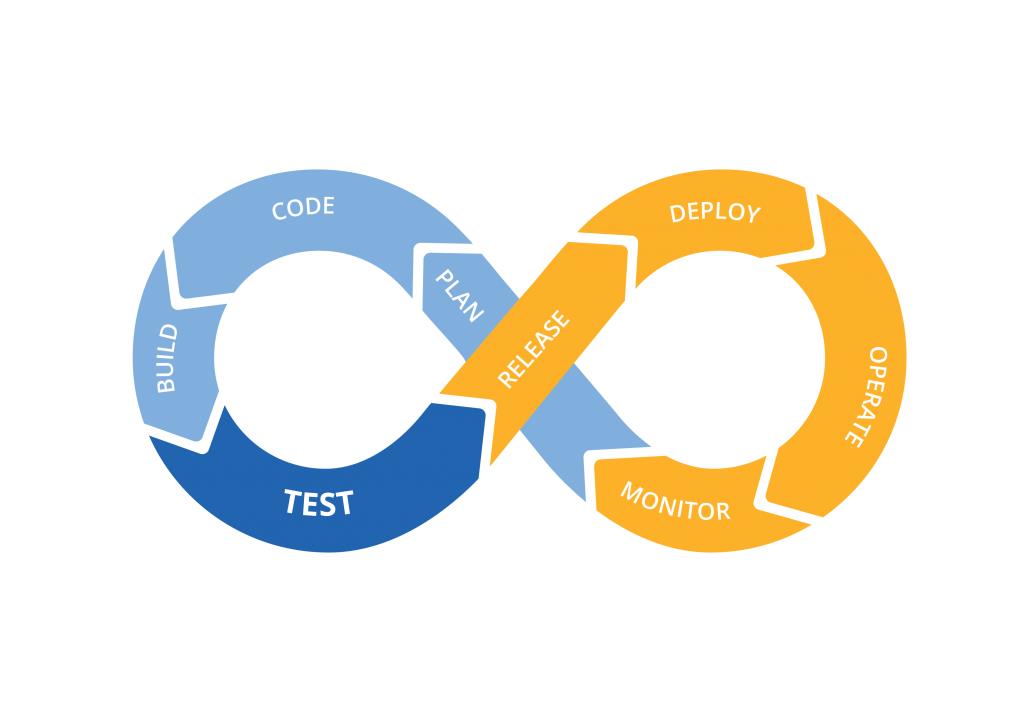The high-tech technology realm today has set high expectations for every one of us. We want everything instantly, isn’t it?
This is the similar scenario for the IT industry today. In this connected world, they want to justify a right blend of time, efficiency and class result while delivering the software application at time. Optimal use of these factors (time, quality and efficiency) defines the success of a company in this competitive market. Therefore, enterprises today have adopted agile and DevOps development to instantly bring ideas to development.
Agile will definitely help to develop an idea in a matter of weeks. But what when the development is complete? Now it’s time to bring the operations team on board, initiate the request for server, get in touch with database admin for database access, and once you have the access, it gets ready for the test. This process of development and rigid distributed operations is quite familiar for large companies. The main focus today is on enhancing the efficiency gap created due to separate development and operation processes.
Once the agile development is adopted by enterprises, it gets difficult to maintain the same agile pace during the maintenance. And, that’s where DevOps can help you out.
Let’s zoom in the process of efficiency and understand DevOps:
Let’s Break The Uncertainty About ‘What is DevOps?’
DevOps is the practice of combining operation and development developers together in the complete Custom Software Development Services lifecycle, from development to design to launch process.
DevOps is word coined from the combination of ‘Development’ and ‘Operations’; as the term states it is a software development practice that combines critical approaches of development and operations in a uniform way.
In business context, it is a cultural change that breakdowns the barrier of two separate teams and plans to bring the entire experience of development into agile experience, instead of having two siloed teams. It forms the channel to integrate and communicate between developer and testing team to boost productivity.
In DevOps phases, the development and testing are done parallelly and this diminishes the communication friction. The developers and testers team work together, identifying and solving the issues while communicating with client at the same time and this considerably benefits the final result.
Now Let’s Turn The Focus On “DevOps Life Cycle”
DevOps takes the whole software lifecycle at a different level, so how can we understand DevOps process with a definition only and without exploring the important phases of its lifecycle? Here, we discuss those main phases that can help you to acknowledge about the essentiality about software integration process with DevOps.
Let’s assume, you know that DevOps logo is an infinity symbol. (If not you can check above picture) This infinity symbol represents the continuous activity and better efficiency. It consists of four continuous phases and they are:
- Continual Development –– The first phase is to plan about your application in context of development. The development stage in DevOps takes no halt. Here you need to create a specific set of achievable objectives based on delivery time of the application and resource available. The entire development process should be divided into smaller development cycles such that the development takes place simultaneously and the software is delivered quickly. Since, DevOps follows continuous mantra, the development code is either produced automatically or developed using existing code and then passed to testing team.
- Continual Testing – Testing is the process that not just conveys about removing the bugs but even relates to the actual use of the application. The beta users need to ensure that the application is optimal for the intended use in the live environment and further provide information to development team about the improvements in the development process. The testing in DevOps is done at each level and integrated with development level.
- Continual Integration – Any changes or enhancements done in the functionality of application after or during development is integrated with the current application during the integration stage. The integration phase is included to ensure that the ongoing process of development and testing is not disturbed and the process of integrating the component is done flexibly. The integration process even helps to identify the errors runtime errors. The tool like Jenkins is used integrate any variation required through automation or manually.
- Continual Deployment – After the development and testing phase, there is a phase where your software is deployed to the production environment and the deployment to servers should be done with flawless accuracy. The deployment taking place should be perfect that any variations done at any time should not affect the runtime of code even the website traffic is high. Therefore, the system admin should maintain scaling up the server to welcome numerous number of host users.
- Continual Monitoring – The critical operational phase in DevOps is the phase of monitoring, where the admin notes down the information about the use of the application and prudently analyses the problems and trends for improvement. The monitoring is integrated in the operation phase of the software application.
The Brighter Side Of DevOps – Benefits
DevOps is a process that aims to make the SDLC better and efficient. The strength and main pillar of DevOps is business agility along with improved ongoing delivery process. Let’s explore the important facts that makes DevOps a worthy choice.
1. Rapid Delivery – Shorter Development Phases
Earlier when the development and operations team worked differently, communication and coordination required to make the software development process flexible became a daunting task. Ultimately, it raises the uncertainty about when the application will move to operation phase and therefore it becomes a good excuse for delayed launch.
Now with DevOps practices like continuous development and continuous testing, the aim for shorter development cycles is fulfilled. When compared to traditional development practices, these shorter development cycles help to deliver results 60% faster.
2. No Space Given To Errors, Failures, Rollbacks & Time to Recover
Okay, let’s assume you have somehow developed the application faster but what when the deployment fails? So, then we assume that the idea of quick development is futile.
Well, the software application developed using DevOps principles makes the defect tracking process easy and thus the pre and post-deployment issues are reduced with minimal rollbacks. DevOps makes it easy to fix the time lost with deployment issues in comparison to traditional software approach.
“DevOps is an approach that improves the deployment frequency, delivers the application quickly, minimizes the failure rate of new releases, and reduces the mean time recovery”
3. Increased Communication and Collaboration
DevOps is a marriage of two conflicting entities (development and operations), which are hooked together to work for a common goal. Development always desires for change and Operations always wants stability, and when these different units are collaborated they encourage radical changes like productiveness in an organization to achieve a common goal rather than the individual one.
DevOps makes the collaborated working dynamic and free of chaos. They motivate each other to share new ideas and innovation for a common goal – to move the product to production phase.
4. Increased Efficiency
It’s a fact that better efficiency will always land you to a phase of better production (better development) and less errors. With the implementation of DevOps principle, you can automate the web app development tasks. As with its continuous development approach, the testing code is automated with help of integration servers and thus the manual efforts are decreased. The development process is faster and less prone to mistakes.
5. Cost & Resource Efficient
Due to 60% faster development the cost is significantly reduced. With DevOps principle, the development team can develop the software with 35% less resources and 30% less IT costs.
So, ready to adopt the catalyst that brings full IT team into a complete picture of agile? Adopting DevOps needs a change in culture and other organization’s mindset. But, once you accept DevOps practices, you have laid your hands on the best & winning practice.









